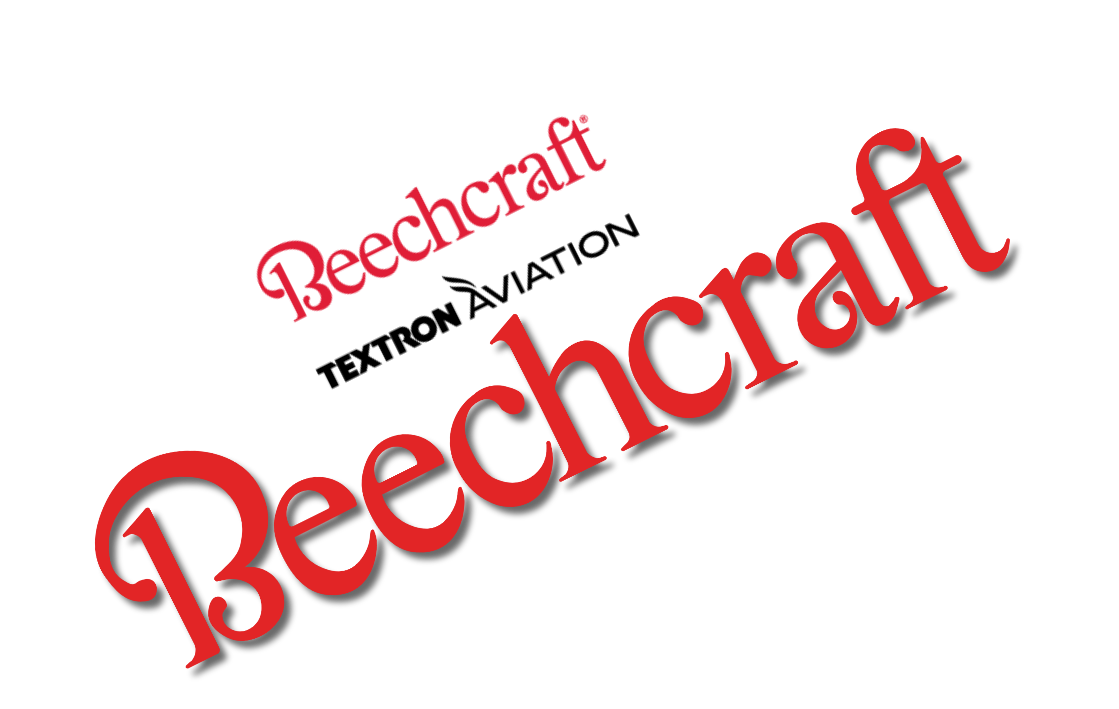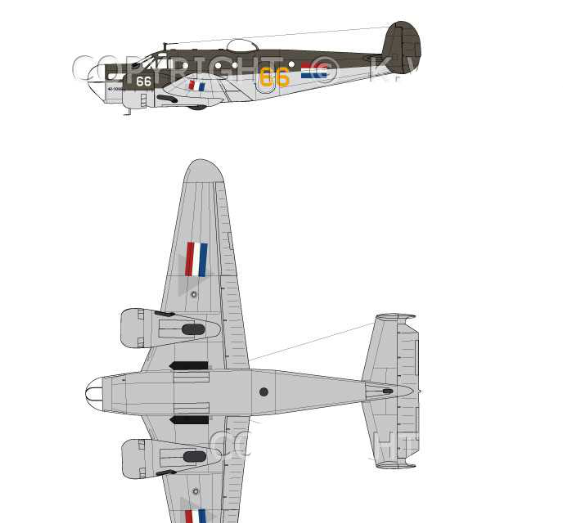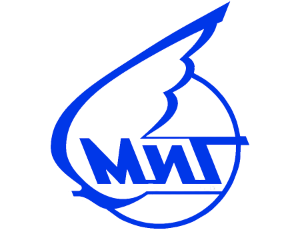Beechcraft
AT-11 Kanzan
|
|||||||||||||||||||||
|
|
|
|---|
.
History Beech Aircraft Corporation
Beechcraft AT-11 Kanzan

The Beechcraft Model 18 (or "Twin Beech", as it is also known) is a 6- to 11-seat, twin-engined, low-wing, tailwheel light aircraft manufactured by the Beech Aircraft Corporation of Wichita, Kansas. Continuously produced from 1937 to November 1969 (over 32 years, a world record at the time), over 9,000 were built, making it one of the world's most widely used light aircraft. Sold worldwide as a civilian executive, utility, cargo aircraft, and passenger airliner on tailwheels, nosewheels, skis, or floats, it was also used as a military aircraft
Design and development
Bombing and gunnery trainer for USAAF derived from AT-7, fuselage had small, circular cabin windows, bombardier position in nose, and bomb bay; gunnery trainers were also fitted with two or three .30-caliber machine guns, early models (the first 150 built) had a single .30-cal AN-M2 in a Beechcraft-manufactured top turret, later models used a Crocker Wheeler twin .30-cal top turret, a bottom tunnel gun was used for tail gunner training, 1,582 built for USAAF orders, with 24 ordered by Netherlands repossessed by USAAF and used by the Royal Netherlands Military Flying School at Jackson, Mississippi.[
Operational history
The first JRB-1 obtained by the Navy, bureau number (BuNo) 09771, was converted from the last civil Model 18 built before production was earmarked solely for the military for the duration of the war. The Navy subsequently obtained more Model 18s as the JRB-3 (C-45B), JRB-4 (UC-45F), SNB-1 Kansan (AT-11), SNB-2 (AT-7), and SNB-2C (AT-7C). Existing naval Twin Beeches were subsequently modified into the SNB-2H air ambulance, SNB-2P reconnaissance trainer, and SNB-3Q electronic countermeasures trainer. The United States Coast Guard acquired seven JRB-4 and JRB-5 aircraft from the Navy between 1943 and 1947; they were primarily used as utility transports, with one aircraft later converted for aerial mapping, and another used for proficiency flying.[
Photo Gallery
Beech Aircraft Corporation
Beechcraft AT-11 Kanzan


Beech Aircraft Corporation
Beechcraft AT-11 Kanzan
General Info
-
-
-
- Crew: 2 pilots
- Capacity: 6 passengers
- Length: 34 ft 3 in (10.44 m)
- Wingspan: 47 ft 8 in (14.53 m)
- Height: 9 ft 9 in (2.97 m)
-
-
Powerplant
-
- Empty weight: 5,420 lb (2,458 kg)
- Gross weight: 7,500 lb (3,402 kg)
- Powerplant: 2 × Pratt & Whitney R-985-AN-1 "Wasp Junior" radial engines, 450 hp (340 kW) each
Performance
- Maximum speed: 225 mph (362 km/h)
- Range: 1,200 mi (1,900 km, 1,000 nmi) at 160 mph (260 km/h; 140 kn) and 5,000 ft (1,500 m)
- Service ceiling: 26,000 ft (7,900 m)
- Rate of climb: 1,850 ft/min (9.4 m/s)
Links to Youtube & Others
World War II
The wing spar of the Model 18 was fabricated by welding an assembly of tubular steel. The configuration of the tubes in combination with drilled holes from aftermarket STC modifications on some of these aircraft have allowed the spar to become susceptible to corrosion and cracking while in service.
Beechcraft Aircraft
Beechcraft AT-11 Kanzan
Beech 18s were used extensively by Air America during the Vietnam War; initially more-or-less standard ex-military C-45 examples were used,
Youtube Link
After the war, the USAAF became the United States Air Force (USAF), and the USAF Strategic Air Command had Model 18 variants (AT-11 Kansans, C-45 Expeditors, F-2 Expeditors, and UC-45 Expeditors)












.png)



